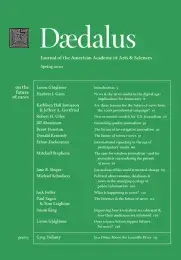Improving how journalists are educated & how their audiences are informed
I’m reminded of an old newsroom saying–“Better to be lucky than good”– when I look back at the almost seven years of the Carnegie Corporation of New York Journalism Initiative. It began as a somewhat unfocused reaction to the wholesale worry about the state of journalism at the end of the 1990s. The Board of the Corporation and the then newly appointed president of the foundation, Vartan Gregorian, wanted to respond to what was seen as an increasingly entertainment-focused news business shedding its values and foreign news bureaus faster than it could stop the red ink.
The need for a democracy to be strengthened by a vital news business was the impetus for the Corporation’s initiative. After all, positive change cannot happen in school reform, the immigration system, in international affairs, nuclear nonproliferation, or the understanding of Islam–indeed, in almost any area of our national life or international relationships that lies within or beyond the scope of the Corporation’s work–unless vibrant news media engage the American public about the issues of this still-emerging century.
Since education is a foundational value and tradition at Carnegie Corporation, we decided to focus our initiative not on what was happening in U.S. newsrooms, but instead on what was happening within journalism schools at some of America’s most prestigious research universities. That was the lucky part of our decision-making: our focus on a “pipeline” strategy that would affect the next generation of journalists. By 2009, the upcoming generation of newsmen and newswomen was clearly more critical to the debate about the news business than the middle-aged “leaders.” The revolution in news via the Web was challenging the financial model of even America’s most secure newspapers, as well as transforming the entire way that the news is delivered, consumed, and produced.
There is an irony for me in the fact that Carnegie Corporation’s journalism work began in Silicon Valley, where the Internet transformation was born, and that it took place at the home of Walter Shorenstein, who, already close to ninety at that time, represented the world of news as it was practiced in the last century. A successful businessman, Shorenstein has always been predisposed to the need for change. As a tribute to his daughter . . .
